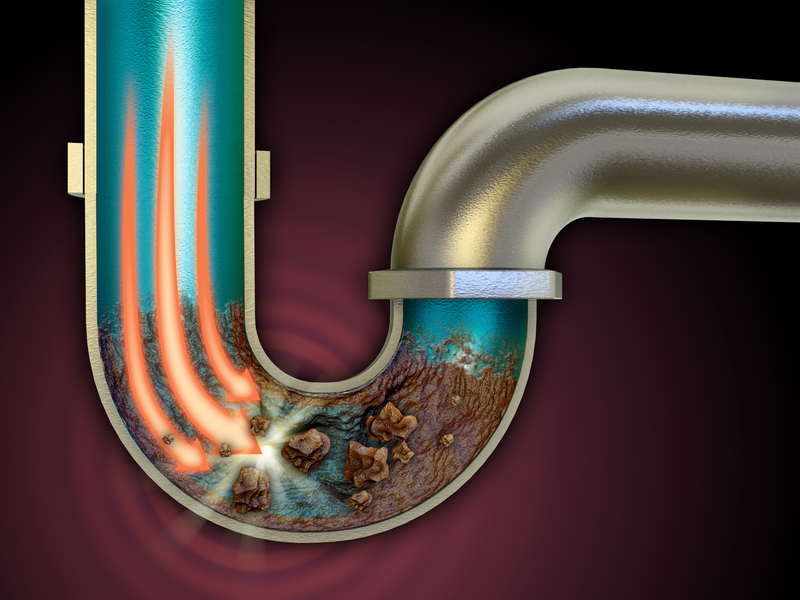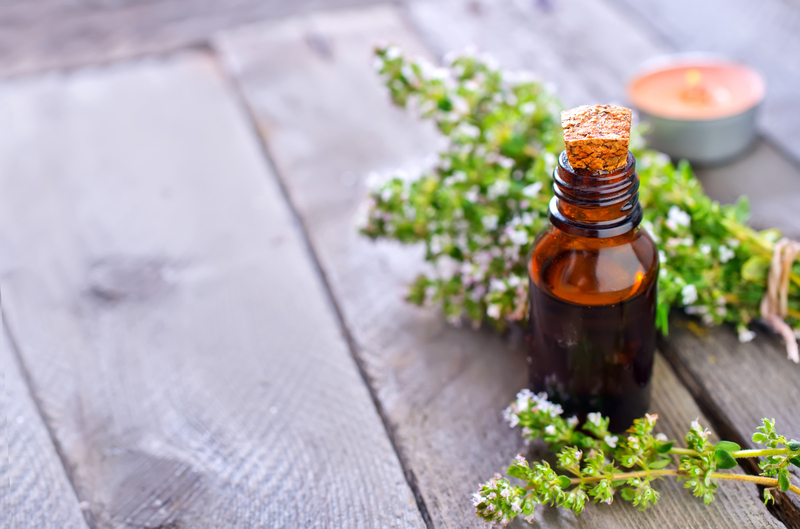Tackle Mold on Window Sills with These Easy Steps
Posted on 14/08/2025
Tackle Mold on Window Sills with These Easy Steps
Mold on window sills is a common issue that many homeowners face, especially in areas with high humidity or improper ventilation. Not only is it unsightly, but it can also pose health risks and cause damage to your property over time. In this comprehensive article, we'll explore easy and effective ways to remove mold from window sills, prevent it from returning, and maintain a healthy environment in your home.
Understanding Why Mold Grows on Window Sills
Before diving into the best techniques to remove mold from window sills, it's important to understand why mold tends to proliferate in these areas. Mold spores are naturally present in the air, but they thrive in warm, damp, and poorly ventilated spaces.
- Condensation: Windows are prone to condensation, especially during colder months. Water droplets collect on the glass and sills, creating a damp environment suitable for mold.
- Poor insulation: Single-pane or inadequately insulated windows allow temperature differences that condense moisture on surfaces.
- Lack of proper air circulation: Stagnant air means moisture doesn't evaporate quickly, setting the stage for mold spores to settle and grow.
Identifying the root cause is instrumental for effective mold removal on window sills and for developing long-term solutions.

Is Mold on Window Sills Dangerous?
It's not just an eyesore! Mold on window ledges can cause a variety of health problems, especially among allergy sufferers, children, elderly individuals, and people with weakened immune systems. Common symptoms include:
- Respiratory issues
- Eye, nose, and throat irritation
- Headaches
- Worsening of asthma symptoms
- Fatigue
Beyond health, persistent mold growth can damage window frames, sills, and even sheetrock, leading to expensive repairs.
Basic Safety Precautions: Protect Yourself While Removing Mold
Before you begin cleaning mold on window sills, ensure you protect yourself. Mold spores can become airborne during the cleaning process. Here's how to stay safe:
- Wear gloves: Use rubber or latex gloves to avoid skin contact with mold or chemical cleaning agents.
- Protect your eyes: Safety goggles can prevent mold particles or cleaning solutions from irritating your eyes.
- Use a mask: An N95 respirator mask helps avoid breathing in mold spores.
- Ventilate the area: Open windows and doors to allow fresh air to circulate and reduce mold spore concentration in the air.
Step-By-Step Guide: How to Tackle Mold on Window Sills
Ready to get rid of mold on your window sills? Follow these easy-to-follow steps to clean safely and thoroughly:
1. Gather Cleaning Supplies
- Spray bottle
- White distilled vinegar or hydrogen peroxide
- Baking soda (optional for scrubbing power)
- An old toothbrush or small scrubbing brush
- Microfiber cloths or paper towels
*Avoid using bleach on porous window sills (such as wood), as it may damage the material and does not penetrate to kill all mold roots.
2. Remove Loose Debris and Dust
Use a vacuum cleaner with a HEPA filter or a damp cloth to remove dust, dirt, or loose mold spores. Discard vacuum cleaner bags or cloths afterward.
3. Apply Cleaning Solution
Option 1: White Vinegar
- Pour undiluted white vinegar into a spray bottle.
- Spray generously over the moldy areas and let it sit for at least 60 minutes. Vinegar's acidity breaks down mold.
- Use a 3% hydrogen peroxide solution in a spray bottle.
- Spray liberally and wait about ten minutes.
4. Scrub the Mold Away
Use your old toothbrush or scrubbing brush to gently but firmly scrub the window sill where the mold has grown. For stubborn spots, sprinkle some baking soda on the brush - this helps lift mold while acting as a mild abrasive.
5. Wipe Clean and Dry Thoroughly
- Use a damp microfiber cloth to wipe away mold residue and cleaning solution.
- Follow up with a dry, clean towel to ensure there's no residual moisture.
Important: Ensuring the sill is completely dry is crucial, as leftover moisture may trigger new mold growth.
6. Dispose of Cleaning Materials Safely
Throw out used paper towels, old toothbrushes, and gloves or wash reusable items in hot, soapy water. Wash your hands thoroughly after completing the cleaning.
7. Repeat If Necessary
Severe or black mold on window sills may require a second or even third cleaning session. If the mold persists, it might have penetrated deeper into the wood or wall, and you should consider professional mold remediation.
Additional Natural Remedies to Remove Mold on Window Sills
Apart from vinegar and hydrogen peroxide, you can also try these natural remedies for window sill mold:
- Tea tree oil: Mix one teaspoon of tea tree oil with two cups of water, spray the solution, let it sit for an hour, and wipe away.
- Lemon juice: Lemon's acidity and pleasant scent make it a great mold remover. Apply pure lemon juice to the affected area and scrub.
- Baking soda paste: Mix baking soda with a few drops of water to form a paste and use it for spot-treating small mold areas.
These solutions are environmentally friendly and safe for homes with pets and children.
How to Prevent Mold from Returning on Window Sills
Once you eliminate mold from window frames or sills, focusing on prevention will save you from the hassle of repeated cleanings. Here are tips to keep your windows mold-free:
- Control indoor humidity: Maintain indoor humidity below 50%, using dehumidifiers or A/C units if necessary.
- Ventilate regularly: Open windows daily or use exhaust fans in bathrooms and kitchens to reduce moisture.
- Fix window leaks: Address cracked seals, damaged caulk, or leaks around window frames promptly.
- Clean condensation: Wipe away condensation from glass and sills each morning during colder months.
- Use moisture-absorbing products: Place silica gel packets or moisture absorbers near problem areas.
- Repaint with mold-inhibiting paint: Consider repainting window sills with anti-mold or mildew-resistant paint for added protection.
When to Call a Mold Remediation Professional
While DIY mold cleaning on window sills works for minor cases, sometimes a professional is necessary:
- Large infestations: If the moldy area exceeds 10 square feet or recurs after multiple cleanings, call an expert.
- Persistent leaks or structural damage: Water-damaged or rotting wood in sills or frames may need replacement.
- Health concerns: If you or your family experience ongoing symptoms, a professional can ensure all mold is eliminated safely.
Mold remediation companies use advanced HEPA vacuums, moisture meters, and commercial-grade fungicides for thorough and safe removal.
FAQ: Tackling Window Sill Mold Concerns
Can you simply paint over mold on window sills?
No. Painting over mold just covers it temporarily and may result in peeling, bubbling, or further mold growth beneath the paint. Proper removal is always necessary before repainting!
How often should you check your window sills for mold?
Inspect window sills at least once a month for signs of moisture or discoloration, especially during damp seasons.
Can mold on window sills spread to other parts of your home?
Yes. Mold can release spores that travel through the air, potentially causing infestations in other humid or poorly ventilated rooms.
Does bleach kill mold on window sills?
While bleach can kill mold on non-porous surfaces, it's not ideal for window sills, especially if they're wooden or painted. Bleach does not penetrate porous materials adequately; instead, use vinegar or another recommended solution.

Key Takeaways: Easy Steps to Tackle Mold on Your Window Sills
- Identify and address moisture sources: Prevent mold by keeping your window areas dry and properly ventilated.
- Use natural cleaning solutions: Vinegar, hydrogen peroxide, and baking soda are effective for safe, eco-friendly mold removal.
- Scrub and dry completely: Remove all visible mold and ensure the area is dry to discourage regrowth.
- Monitor regularly: Catch mold early and prevent large infestations with frequent inspections.
- Seek professional help for severe cases: Don't ignore large spreads or health issues--experts can handle stubborn infestations.
Conclusion
No homeowner wants to find mold on their window sills, but with the right techniques and prevention strategies, it doesn't have to be a recurring nightmare. Following the easy steps outlined above, you can banish window sill mold safely and effectively, safeguarding both your family's health and the integrity of your home. Remember, prompt action and consistent maintenance are your best defenses. If you found this guide on tackling mold on window sills helpful, explore our other expert articles on home maintenance and well-being!




